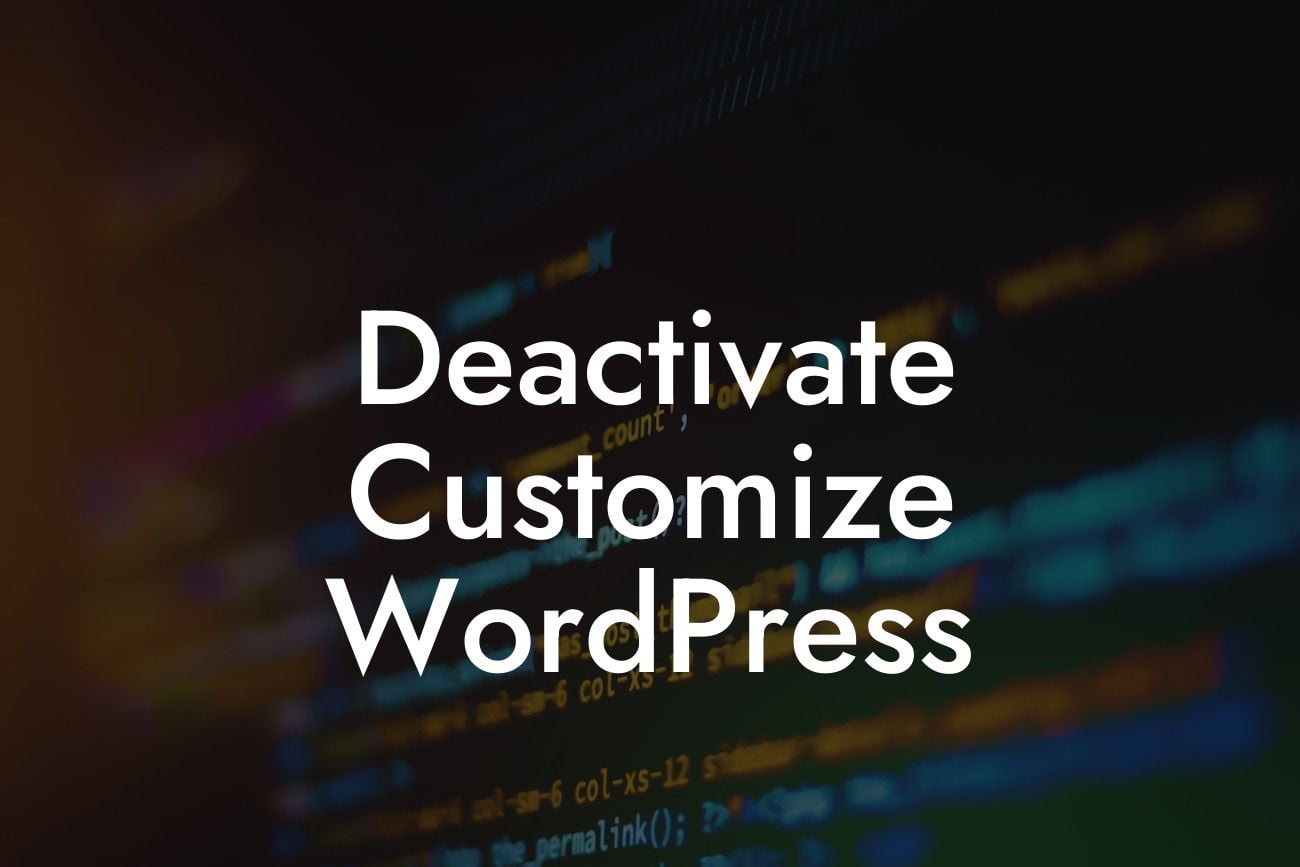Customizing your WordPress website is an essential part of building a unique online presence that reflects your brand. However, what if you no longer wish to utilize the Customize WordPress feature? Whether it's to streamline your workflow or switch to a different customization approach, this article will guide you through the process of deactivating the Customize WordPress feature. Say goodbye to cookie-cutter designs and embrace a more tailored and efficient approach for your small business or entrepreneurial venture.
Deactivating the Customize WordPress feature doesn't mean compromising on the functionality and design of your website. It simply means exploring alternative methods that can better suit your needs. Let's delve into the step-by-step process of deactivating this feature and explore the alternatives to enhance your WordPress site.
1. Identify the need: Before deactivating the Customize WordPress feature, it's crucial to understand why you want to do so. Is it due to the limited layout options, performance concerns, or the desire for a more specialized customization approach? Identifying your needs will help you determine the best course of action.
2. Use a child theme: If you're comfortable with coding or have a developer on board, utilizing a child theme can provide you with greater flexibility. By creating a child theme, you can retain all the functionalities of your current theme and make customizations without relying solely on the Customize WordPress feature.
3. Explore theme options: Consider switching to a different theme that offers more extensive customization options. Many themes provide built-in customization menus that rival or exceed the capabilities of the Customize WordPress feature. Explore the vast array of WordPress themes available and select one that aligns with your design preferences and functional requirements.
Looking For a Custom QuickBook Integration?
4. Implement custom CSS: The power of custom CSS can transform your website's appearance and functionality. If you're comfortable with CSS, you can add your own code snippets to customize various elements of your WordPress site. This alternative method allows you to have complete control over the design without relying on the Customize WordPress feature.
Deactivate Customize Wordpress Example:
Suppose you're a small business owner who wants to create a unique online store. You find that the Customize WordPress feature doesn't provide the level of customization you desire. Instead of settling for a generic design, you opt to deactivate the feature and utilize a child theme. With the help of a developer, you create a child theme that retains the existing functionalities of your chosen theme while allowing you to make extensive customizations. Through this approach, you successfully achieve a tailored and visually appealing online store that stands out from competitors.
Deactivating the Customize WordPress feature opens up a world of possibilities for small businesses and entrepreneurs like you. It empowers you to explore alternative approaches to customization, unlocking greater control over your website's functionality and design. If you're ready to take your online presence to the next level, explore DamnWoo's range of WordPress plugins tailored specifically for small businesses and entrepreneurs. Don't settle for cookie-cutter solutions when you can embrace the extraordinary with DamnWoo.
[Prominent Call-to-Action: Share this article, explore DamnWoo's other guides, and try our awesome plugins to supercharge your success.]
Note: The content above is provided as an example and should be modified according to your brand, products, and style guidelines.













